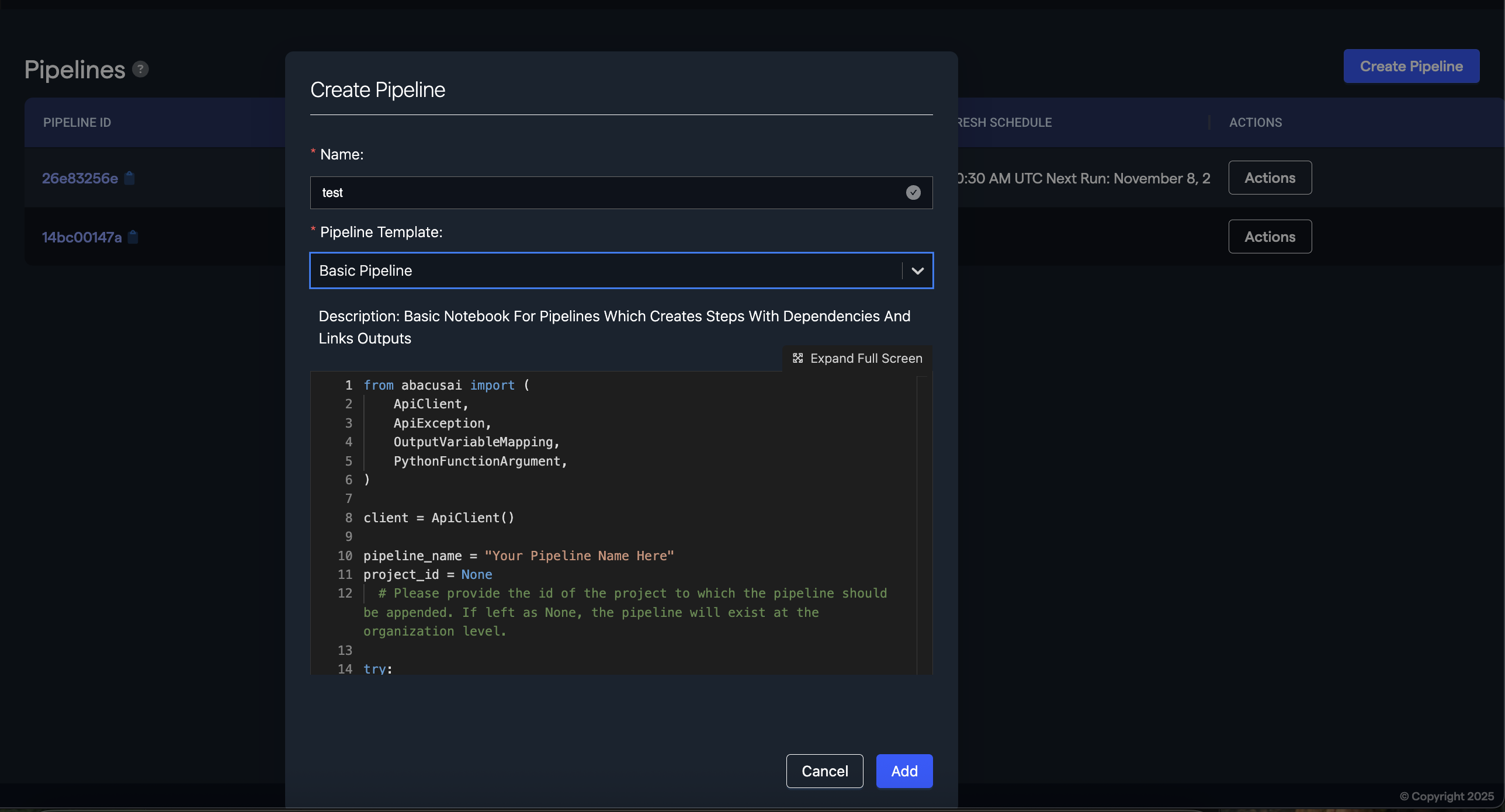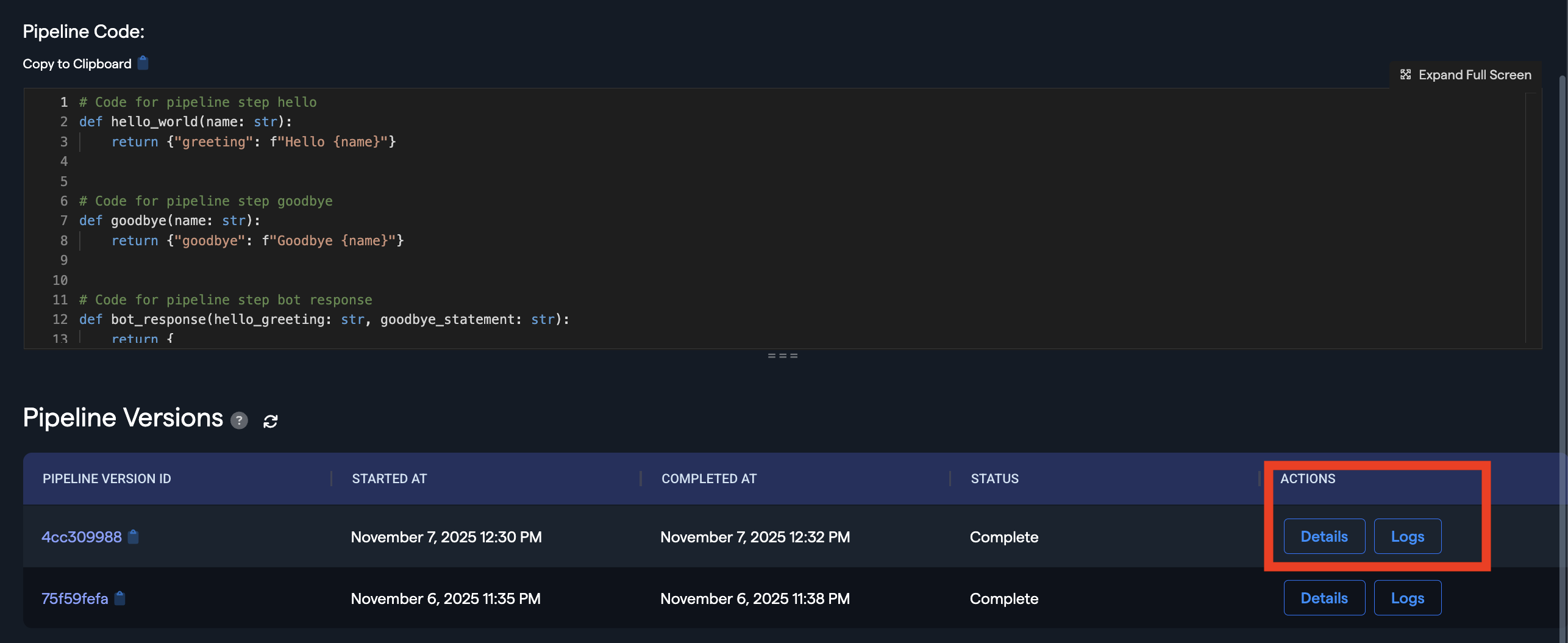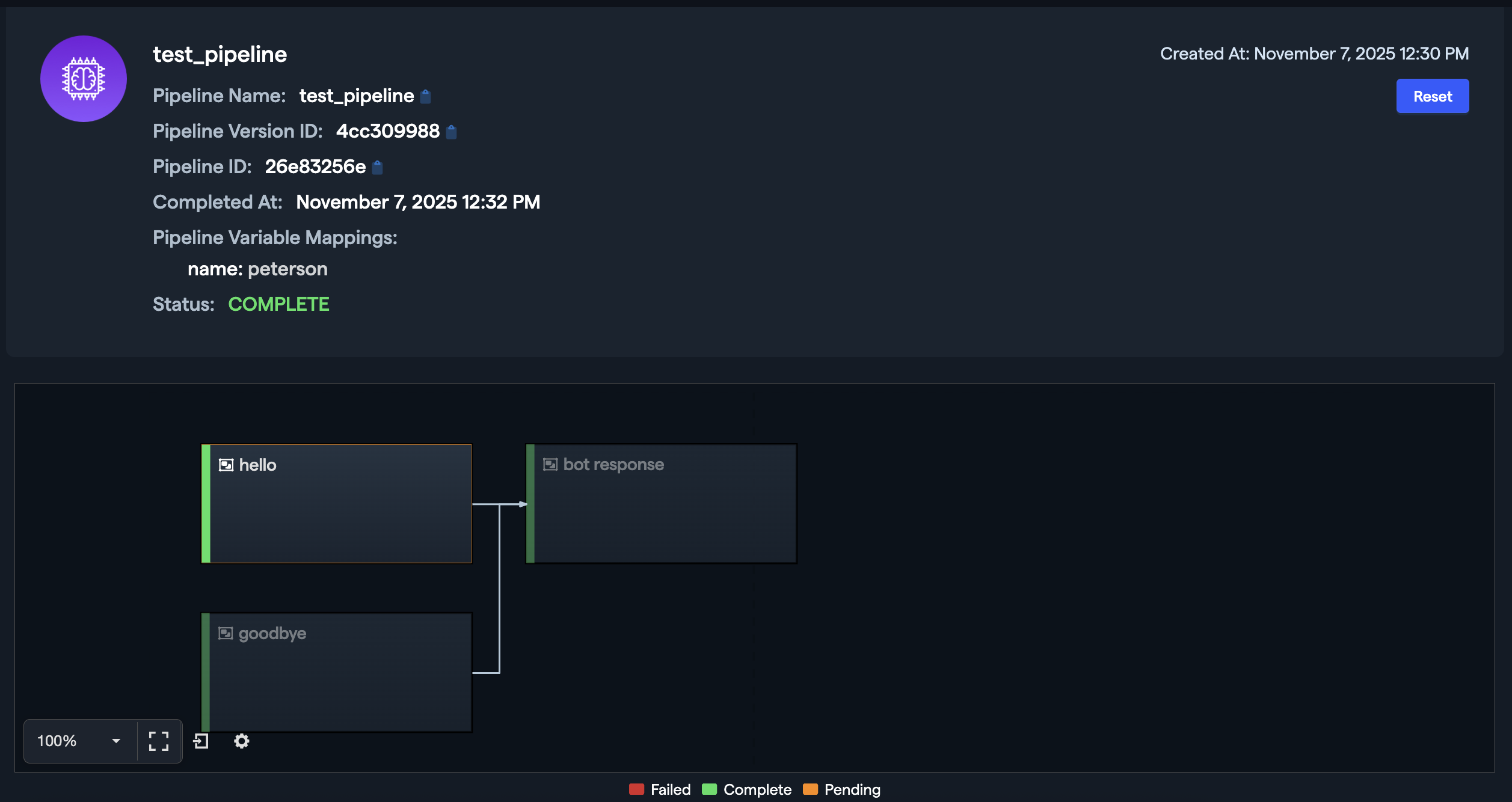Creating Pipelines
Overview
Abacus.AI allows you to create pipelines to orchestrate and automate tasks within your projects.
Use Cases
Pipelines can be used to automate various workflows, such as:
- Refreshing data
- Retraining models
- Deploying models
Pipelines are extremely flexible and free-form, allowing you to orchestrate virtually any workflow.
Pipeline Components
Pipelines consist of three main components:
1. Python Functions
Contains the core logic and functionality of your pipeline operations.
2. Pipeline Steps
Defines how Python functions are transformed and executed within the pipeline.
3. Pipeline
The complete workflow created by connecting all pipeline steps together.
Creating a Pipeline
Step 1: Navigate to Pipelines
Click on Pipelines after navigating inside a project. This ensures the pipeline is connected to your project.

Step 2: Select a Template
Click on Create Pipeline and choose from multiple example templates to get started quickly.

Abacus.AI will open a notebook that you can use to create and configure your pipeline.
Managing Your Pipeline
Once your pipeline is set up, you can manage it directly from the UI:
- Setup Refresh Schedule: Automate pipeline execution on a schedule
- Change Input Mappings: Modify input parameters and configurations
- Edit Pipeline: Opens a notebook for making changes to the pipeline logic

Monitoring Pipeline Runs
At the bottom of the pipeline screen, you can view historical pipeline runs. If you used a logger or print statements in your code, you can view the output in the Logs section.

Handling Pipeline Failures
The Detail page allows you to reset the pipeline in case of failure. You can selectively reset only the steps that failed, rather than rerunning the entire pipeline.
